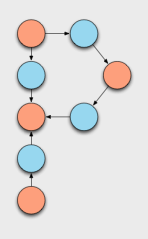How to cite
Wong AK*, Park CY*, Greene CS*, Bongo LA, Guan Y, Troyanskaya OG. IMP: A multi-species functional genomics portal for integration, visualization and prediction of protein functions and networks. Nucleic Acids Research. July 2012;40:W484-W490. [PDF]
About IMP
IMP was created by the Laboratory for Bioinformatics and Functional Genomics in the Lewis-Sigler Institute for Integrative Genomics at Princeton University.
Explore gene networks and function predictions
There are two primary ways to explore the functional networks and biological process predictions in IMP.
Search by gene to view GO (Gene Ontology) biological processes we've predicted your gene to participate in.
Select an organism of interest and enter a gene name (e.g. BRCA1) in the above search box. You will be directed to a gene page with both the predicted processes for your gene of interest and the functional network used in the predictions (centered around your query gene).
Processes that are highlighted are already known to be associated with the query gene.


Search by biological process to view a list of the genes we've predicted to participate in your process of interest.
Select an organism and enter any terms related to your process (e.g. 'dna repair'). The search box will return any GO biological processes matching your query. Select the best matching name and you will be directed to the prediction page for your process.
The displayed network shows functional relationships between a selected gene from the prediction list and genes known to participate in the process, or functional analogs that participate in the process.
Interact with the analysis
The functional networks presented by IMP are highly interactive and configurable. Network views can be controlled by filtering edges by confidence or filtering nodes by connectivity.
Supporting genomic data for functional relationship predictions are readily accessible by hovering over or clicking on any edge in the network. The top ten datasets contributing to the prediction are displayed, and specific evidence from the datasets can be investigated in greater detail.

